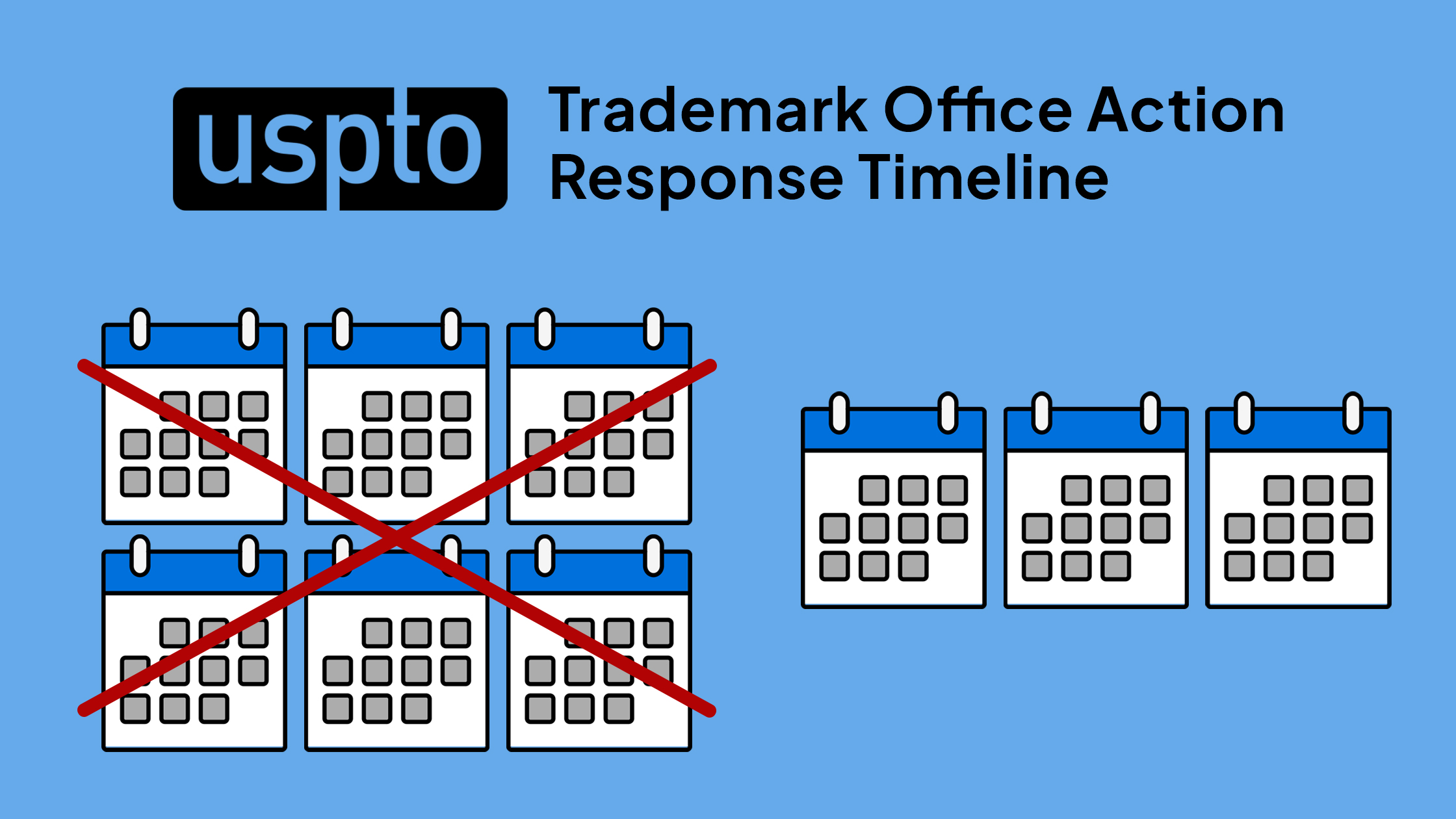USPTO Announces New 3-Month Deadline to Respond to Trademark Office Actions

The USPTO has recently announced that starting on December 3, 2022, trademark applicants will now only have 3-months to respond to an Office action. This is now half the time of the current 6-month period.
This now creates an urgency among trademark applicants to respond quicker to Office actions, as they only have a few months to respond (as opposed to half a year).
Where did this new policy come from and why?
In 2020, Congress passed the Trademark Modernization Act of 2020, which introduced a few new rules for trademark owners as well as updates to existing procedures. These new and updated policies are meant to speed up the already long and time-consuming trademark application process.
As of October 2022, the time from when a trademark application is filed to when the USPTO actually looks at the application is about 9-12 months! If you were to file a trademark application today, it could be almost a year from now when the USPTO reviews your application. This year long-gap can be frustrating to applicants as it creates a year-long pause as to whether they know if they have a trademark registration or not for their business.
The new 3-month Office Action response period is meant to help the USPTO move through the backlog of trademark applications as well as to advance trademark applications through the registration process more efficiently.
What does this new 3-month Office Action response deadline mean for applicants?
1. There will be shorter wait times to have your application reviewed (eventually).
Waiting an entire year to have your trademark application reviewed by the USPTO can be a frustrating process. After this new deadline is enacted, the USPTO will start to clear out its backlog of applications waiting to be reviewed. Once this occurs, the USPTO can make decisions in a 3-month time frame after they hear from applicants, instead of 6-months, thereby cutting the waiting period in half.
However, it will still take a while for the effects of the 3-month deadline to clear up the backlog, as there is already a backlog of pending applications filed throughout all of 2022.
2. You will have to make quicker decisions when you get an Office Action.
Time is of the essence when you receive an Office Action. You will no longer have the luxury of half a year to think about options and then make a decision in month 5 after you get an Office action.
Three months is a very quick turnaround time for an applicant to respond to an Office Action. By the time an applicant reviews an Office Action, then searches and seeks legal counsel an entire month could have expired. This leaves only 2-months left to respond, putting more urgency on applicants and law firms to get responses out quicker.
The new time frame will especially be difficult for more complex legal issues. If an applicant gets a likelihood of confusion refusal, they may hire a law firm to look into settlement discussions with owners of a registered trademark. These discussions typically take 2-3 months between negotiations and the drafting of agreements and now must be completed in a very condensed time frame. This means that issues that normally take about 4-6 months now have to be squeezed into a 1-2 month time frame.
3. If you need more than 3-months to respond, you will have to pay another $125 fee.
With this new policy, you can now request one single three-month extension for $125. You must file this request for an extension of time before the initial deadline is reached. If the USPTO gives you an extension, then you get 6-months from the issue date of the Office Action.
4. Your application will abandon if you do not meet the 3-month deadline.
The USPTO will keep the same abandonment procedure after the 3-month deadline. If you do not respond and the USPTO abandons your application, you will need to pay a fee to revive your application and fill out a petition to revive your application.
5. The best way to avoid this expedited 3-month deadline is to prepare the best trademark application you can from the start.
It goes without saying that the best way to avoid responding to a refusal is to not have a refusal at all. The best way to avoid an Office Action refusal is to minimize risk in your trademark application, which means completing a trademark clearance search for potential conflicts, assessing descriptiveness issues, and making sure your application meets all the requirements that the USPTO needs.
Making sure your application has an ID that the USPTO will accept, preparing proof of use, and tidying up all other aspects of your application will also prevent technical refusals. Any type of Office Action will stop your trademark application process and will require time, and sometimes more fees, to respond.
Make sure you give yourself the best chance to have a successful trademark application upfront, in order to avoid having a small time window to seek legal help and running up against a clock to respond. One of the best ways to give your trademark application a higher percentage of approval is to work with an experienced trademark attorney.
Do you need assistance with a trademark matter?
Contact an Attorney Today